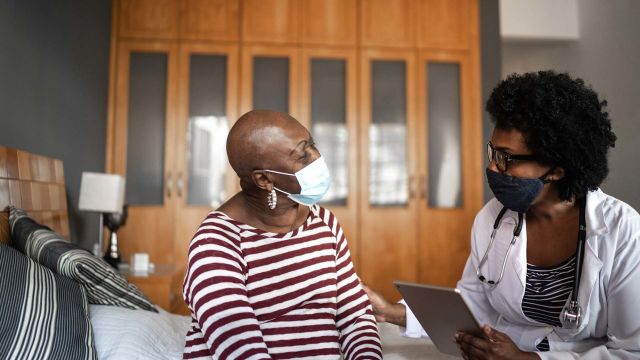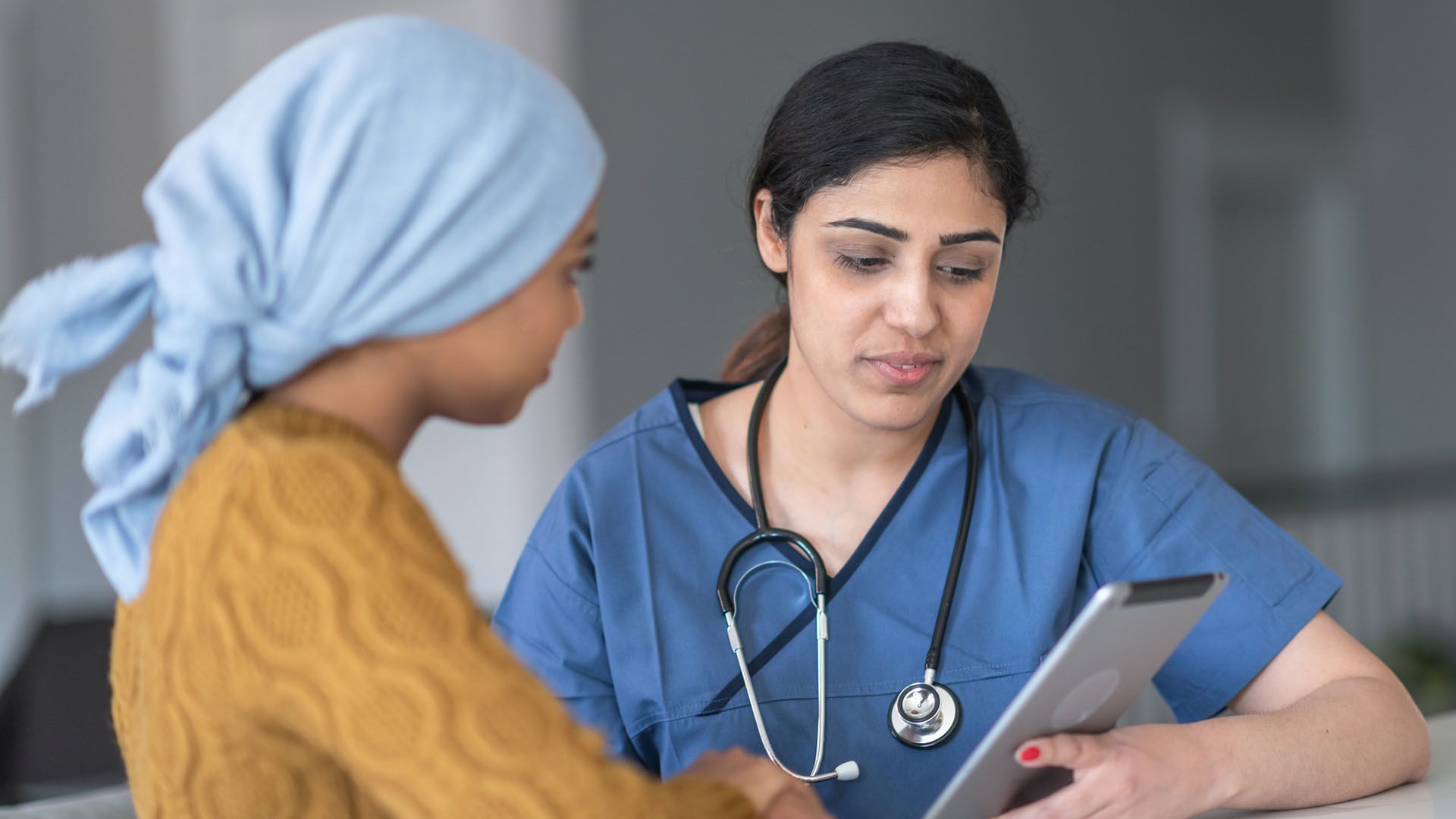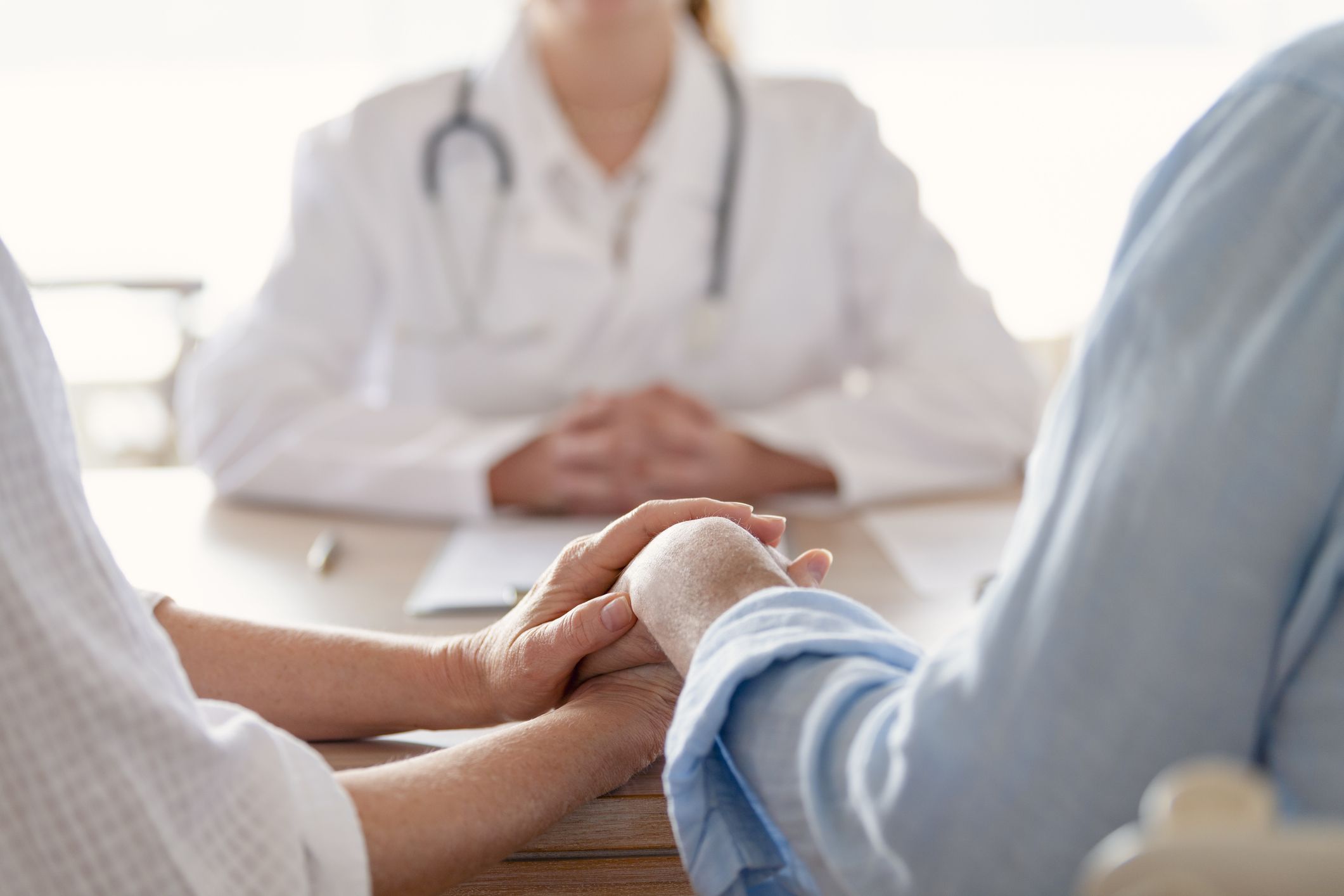When a person is diagnosed with breast cancer, there are a number of important factors that healthcare providers will account for—the type of cells where the cancer originated, the size of the tumor, if the cancer has invaded nearby tissues, if the cancer has spread, the presence of protein and/or hormone receptors on the cancer cells.
All of this information is very useful in determining the best approach to treatment. But there are many other factors that influence what the experience will be for the person with breast cancer.
One of these factors is health insurance.
Insurance status and outcomes
Research has demonstrated that people who do not have health insurance are more likely to be diagnosed with breast cancer at a later stage. Mortality rates are also much higher among people who are uninsured.
This is true for other types of cancer as well—being uninsured or underinsured is associated with being diagnosed at a later stage and higher mortality rates.
While breast cancer is often unpredictable, people generally have better outcomes from treatment when the cancer is diagnosed at an earlier stage. People without health insurance are more likely to skip routine screenings that can identify breast cancer at earlier stages.
After diagnosis, people who do not have health insurance are less likely to receive newer treatments and less likely to work with providers who specialize in different aspects of cancer treatment. These factors play an important role in the outcome from treatment.
Uninsured and underinsured
While the number fluctuates from year to year, roughly 10 percent of the U.S. population is uninsured at any given time. This is as many as 30 million people.
While many different people are uninsured, statistics show that there is racial and ethnic disparity among uninsured people in the U.S.
Research published by The Assistant Secretary for Planning and Evaluation (ASPE) Office of Health Policy concluded that people who are Black, Hispanic or Latino, or American Indian and Alaska Native represent disproportionate percentages of the uninsured population.
Millions more people are “underinsured.” People who are underinsured have healthcare coverage, but they cannot meet the out-of-pocket costs associated with healthcare. People who are underinsured are more likely to skip needed healthcare because of the cost. Many experience problems with medical bills and debt.
Breast cancer can be a very expensive condition to treat, even for people who have insurance coverage. In recent years, a term has emerged to describe the burden of medical bills and out-of-pocket costs faced by people with cancer—financial toxicity.
If any of this has been your experience with either cancer or healthcare, know that you are not alone—these are problems that affect millions of people in the U.S.
Affording cancer treatment
If you are uninsured and are living with breast cancer, insurance coverage can make an important difference in your cancer treatment. Under the Affordable Care Act, people with cancer cannot be denied insurance coverage because of their diagnosis. If you do not have the option of being insured through an employer, remember that you have other options:
- Medicaid. This is the federal government's health-insurance program for people with limited income and resources. Eligibility varies state by state. Visit healthcare.gov.
- Medicare. This is the federal government's health-insurance program for people aged 65 and older. Eligibility varies state by state. Visit medicare.gov.
- Get Covered Connecter. Visit getcoveredamerica.org or call 1-800-318-2596 to connect with resources in your area that can help you find healthcare coverage.
You might also consider working with an oncology social worker. Many healthcare teams and hospitals employ oncology social workers to help patients navigate different aspects of cancer treatment, including insurance and finances. There are also organizations that can pair you with an oncology social worker, such as CancerCare (cancercare.org).






